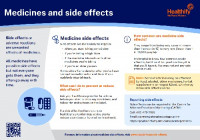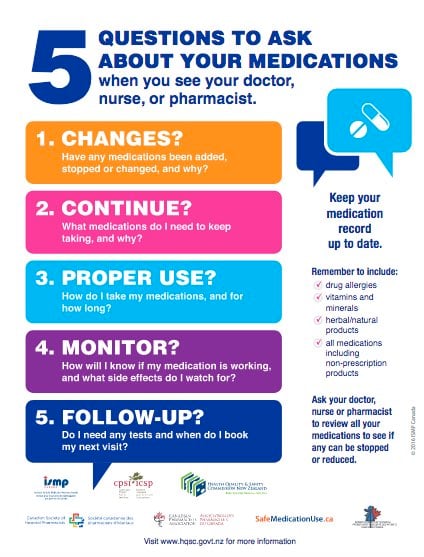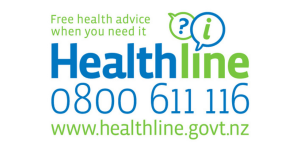Wishing everyone a safe and happy Christmas and New Year – Meri Kirihimete from the Healthify team.
Oseltamivir
Sounds like 'os-el-tam-ih-veer'. Also called Tamiflu.
Key points about oseltamivir
- Oseltamivir is used to treat or prevent infection caused by the influenza (flu) virus.
- Oseltamivir is also called Tamiflu®.
- Find out how to take it safely and possible side effects.

Oseltamivir is used to treat and prevent symptoms caused by the influenza (flu) virus. It works by stopping the influenza virus from spreading inside your body.
It can make the symptoms of the flu less severe, help you recover faster and lower the chance of other problems occurring, such as pneumonia.
In Aotearoa New Zealand, oseltamivir is available as capsules (75 mg) or as an oral liquid for children. It’s available and funded for some people in hospital with a weakened immune system who are at higher risk of getting complications from the flu.
If you have developed flu symptoms in the last 2 days or have been in contact with someone who has the flu in the last 2 days, you can contact your healthcare provider to help you decide if oseltamivir is suitable for you.
If you’re over 13 years of age, the capsules are available to buy, after a consultation with a pharmacist, but you’ll need to pay the full cost.
Oseltamivir is available on a prescription from a prescriber but it’s not funded and you’ll need to pay the full cost.
To treat influenza
If you already have signs and symptoms of the flu, oseltamivir helps to reduce symptoms such as fever, chills, stuffy nose, cough, sore throat, aches and tiredness. It shortens the time taken to recover from the flu by 12 to 24 hours.
- Oseltamivir can reduce the chance of illnesses that may occur as a result of the flu (called complications), such as pneumonia. People at higher risk of complications include:
- pregnant women
- children under 4 years of age
- adults 65 years of age or older
- people with chronic disease, immunosuppression (taking medicines that weaken the immune system) or chronic respiratory condition such as asthma.
- Oseltamivir is best started within an hour or two of the first symptoms of the flu, but it can still be effective after this time, as long as it's started within 48 hours of the first symptoms.
To prevent influenza
If you are at high risk of complications from getting the flu, you may be able to take oseltamivir to help prevent it. For example, if you have come into contact with someone who already has the flu (such as a sick household member) or if there is a flu outbreak in the community.
- To prevent influenza, oseltamivir is best started within 2 days of coming into contact with someone with the flu.
- The best way to protect yourself against getting the flu is to get the flu vaccine every year. Oseltamivir isn't a substitute for the flu vaccine.
Always take your oseltamivir exactly as your healthcare provider has told you. The pharmacy label on your medicine will tell you how much oseltamivir to take, how often to take it and any special instructions.
The dose of oseltamivir is different depending on whether it's used to treat influenza or prevent influenza.
| Dose | |
| To treat influenza |
|
| To prevent influenza |
|
- Start taking the capsules as soon as possible: Swallow your oseltamivir capsule with a glass of water.
- Food: You can take your oseltamivir capsule with or without food. If you get a sore stomach, take it with food or milk.
- Timing: If you're taking oseltamivir 2 times a day, space your doses evenly throughout the day. So, for example, take one dose in the morning and the other in the evening.
- Missed dose: If you forget your dose, take it as soon as you remember that day. But, if it's nearly time for your next dose, just take the next dose at the usual time. Don't take double the dose.
- Keep taking it until the course is finished: Continue to take oseltamivir for the full time it has been prescribed. Stopping the medicine too early may cause a return of the infection or may not protect you from the flu.
- Are you pregnant or breastfeeding?
- Do you have problems with your kidneys?
- Are you taking any other medicines? This includes any medicines you buy without a prescription, such as herbal and complementary medicines.
If so, it’s important that you tell your healthcare provider before you start oseltamivir. Sometimes a medicine isn’t suitable for a person with certain conditions or it can only be used with extra care.
Like all medicines, oseltamivir can cause side effects, although not everyone gets them. Often side effects improve as your body gets used to the new medicine.
| Side effects | What should I do? |
|---|---|
|
|
|
|
|
|
Read more about medicines and side effects and reporting a reaction you think might be a side effect.
The following links provide further information on oseltamivir.
Oseltamivir(external link) NZ Formulary Patient Information
Tamiflu®(external link) Medsafe Consumer Information Sheet, NZ
Brochures
Medicines and side effects(external link) Healthify He Puna Waiora, NZ, 2024
5 questions to ask about your medications(external link) Health Quality and Safety Commission, NZ, 2019 English(external link), te reo Māori(external link)
References
- Oseltamivir(external link) New Zealand Formulary
- Tamiflu(external link) Medsafe datasheet, NZ
- Jefferson T, Jones M, Doshi P, et al. Oseltamivir for influenza in adults and children – systematic review of clinical study reports and summary of regulatory comments(external link) BMJ 2014;348:g2545
- Muthuri SG, Venkatesan S, Myles PR, et al. Effectiveness of neuraminidase inhibitors in reducing mortality in patients admitted to hospital with influenza A H1N1pdm09 virus infection – a meta-analysis of individual participant data(external link) Lancet Respir Med. 2014;2:395–404
- Freemantle N, Shallcross LJ, Kyte D, et al. Oseltamivir – the real world data(external link) BMJ 2014;348:g2371
- Diagnosing and managing influenza(external link) BPAC, NZ, 2009
Brochures

Medicines and side effects
Healthify He Puna Waiora, NZ, 2024

Health Quality and Safety Commission, NZ, 2019 English, te reo Māori
Credits: Healthify editorial team. Healthify is brought to you by Health Navigator Charitable Trust.
Reviewed by: Stephanie Yee, Pharmacist, Auckland
Last reviewed:





